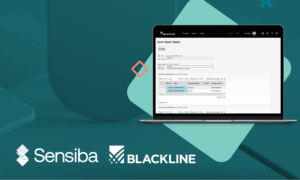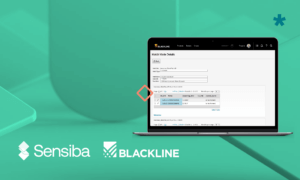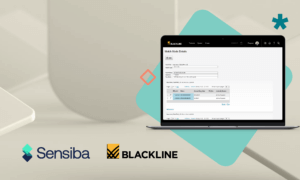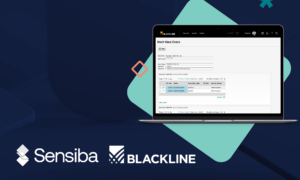For many finance departments, the month-end close represents a recurring challenge driven by long hours and high stress. Time-consuming manual processes dominate the landscape as teams spend hours entering data, verifying balances, juggling email threads to coordinate tasks, preparing journal entries, and compiling reports in disconnected systems.
This heavy reliance on manual intervention creates inefficiency, and it can increase the risk of errors. A mistyped figure or a missed reconciliation can cascade through financial statements, causing rework that delays completion and threatens compliance deadlines.
BlackLine is a leading provider of cloud-based financial close solutions. The platform offers a comprehensive platform that streamlines and automates key processes, allowing finance teams to break free from the limitations of traditional approaches. BlackLine transforms processes to reduce risk, improve accuracy, and free your team to focus on higher-value work.
How BlackLine Promotes Successful Month-End Closes
Automated Account Reconciliation
Account reconciliation traditionally consumes a disproportionate amount of time during the month-end close. BlackLine transforms this process through intelligent automation that matches transactions according to customizable rules, dramatically reducing manual effort.
For instance, BlackLine allows finance teams to auto-match transactions and flag exceptions for review while monitoring reconciliation status in real time across all accounts.
To understand the full scope of BlackLine’s transaction matching capabilities, see our article: Beyond Reconciliation: The Power of BlackLine Transaction Matching
Streamlined Journal Entries
BlackLine automates the preparation, review, and approval of journal entries, replacing processes that traditionally rely on email and spreadsheets.
The platform enforces standardization across journal entries, ensuring consistency and compliance with accounting standards. Built-in validation rules catch potential errors before posting, eliminating the need for correcting entries.
The structured workflow enforces appropriate approvals and maintains comprehensive documentation, creating a clear audit trail that simplifies compliance efforts.
Efficient Financial Reporting and Analytics (FRA)
Financial reporting quality directly impacts business decisions and stakeholder confidence. BlackLine enhances reporting capabilities by ensuring underlying data is accurate, reconciled, and controlled properly. BlackLine’s Financial Reporting and Analytics (FRA) tool provides pre-consolidated financial statements for executives, including balance sheet, income statement, and statement of cash flows. The financial statements can represent specific needs in an organization such as an industry-specific calculation for EBITDA.
FRA also provides automated fluctuation analysis on the financial statements that can generate variance reconciliations to be explained by end users according to predetermined tolerance thresholds. These variance explanations can be rolled up to the financial statement line level automatically via artificial intelligence, saving time and effort in creating footnote disclosures on the financial statements.
By automating data collection and validation, BlackLine eliminates the manual compilation process that can delay reporting and introduce errors. The result is faster, more reliable financial information that drives better business decisions.
Enhanced Controls and Compliance
Control weaknesses in the financial close process create significant risk exposure. BlackLine addresses this concern through robust controls, role-based access and approval workflows, and enforced segregation of duties within the platform.
Every activity is documented automatically in a comprehensive audit trail. This detailed record provides evidence of compliance with policies and regulations, simplifying audit preparation and reducing compliance costs.
Benefits of a BlackLine-Powered Month-End Close
Increased Efficiency and Productivity
Companies implementing BlackLine typically report dramatic reductions in close time—often cutting days from the process. This efficiency gain comes from eliminating manual tasks and standardizing workflows across the organization.
As routine tasks become automated, finance professionals can redirect their attention to higher-value activities such as analysis and strategic planning. This shift transforms the finance function from a transaction-processing center to a strategic business partner.
Enhanced Visibility and Control
BlackLine provides visibility into the close process through real-time dashboards and reports. Finance leaders gain immediate insight into status, bottlenecks, and potential issues, allowing for proactive close process management.
This transparency extends to supporting documentation and reconciliation details, ensuring questions can be addressed quickly.
Improved Collaboration and Communication
The centralized nature of BlackLine fosters better collaboration among finance team members. Rather than swapping spreadsheets and emails, team members work in a unified platform that maintains version control and provides clear visibility into assignments and status updates.
The structured workflow automates notifications and reminders, reducing the communication overhead typically associated with complex close processes. This streamlined communication accelerates approvals and reduces delays caused by miscommunication.
For companies seeking to transform their month-end close process, BlackLine offers a compelling solution that addresses the fundamental challenges of manual, spreadsheet-driven approaches. By automating key processes, enhancing controls, and improving visibility, BlackLine enables finance teams to achieve a faster, more accurate close while reducing risk and freeing resources for strategic activities.
To learn more about enhancing your close process with BlackLine, contact us.
















